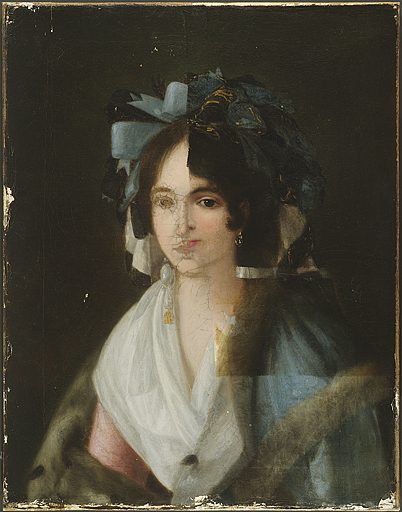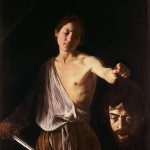
Art forgeries are more than just clever imitations; they are a fascinating blend of skill, deception, and audacity. These fakes have fooled experts, duped collectors, and even found their way into prestigious museums. The art world has always had a complicated relationship with forgeries, as they reveal not only the vulnerabilities within the industry but also the incredible talents of those who create them. From cunning techniques to elaborate backstories, art forgers have used their craft to challenge our understanding of authenticity and value.
The allure of art forgery lies in its high stakes. The art market, driven by collectors’ insatiable desire for masterpieces, creates a fertile ground for deception. Forgers exploit this, producing works that are nearly indistinguishable from the originals. Their forgeries not only question the integrity of art transactions but also prompt a deeper inquiry into what makes art valuable in the first place. Art forgery is not just a crime; it is a sophisticated game of cat and mouse that has captivated people for centuries.
In this article, we will delve into some of the most convincing art forgeries that fooled the world. These cases showcase the ingenuity of forgers and the subsequent fallout when their deceptions were uncovered. We will explore the techniques used, the stories behind these notorious fakes, and the impact they had on the art world.
The Art of Forgery
Art forgery is the creation of fraudulent artworks with the intent to deceive. This practice dates back centuries, evolving with advancements in technology and changes in the art market. Historically, forgers would create copies of popular works or fabricate entirely new pieces, attributing them to well-known artists. Over time, their methods became more sophisticated, incorporating detailed research into the materials, techniques, and styles of the artists they sought to emulate.
One of the oldest known instances of art forgery occurred in ancient Rome, where copies of Greek sculptures were highly sought after. These forgeries were often so well-made that even the experts of the time were fooled. As art became more commodified, the potential profits from selling forgeries grew, attracting more skilled forgers. The Renaissance saw a surge in art forgery, with counterfeiters capitalizing on the booming art market driven by wealthy patrons and collectors.
Modern forgers employ a variety of techniques to create convincing fakes. They use period-appropriate materials, replicate the brushstrokes and techniques of the original artists, and sometimes even age their works artificially to give them an authentic patina. Some forgers go to great lengths to create plausible backstories for their works, producing forged documents and provenance to support the authenticity of their creations. The most successful forgers are those who can blend artistry with meticulous attention to detail, making their fakes almost indistinguishable from genuine pieces.
Despite the efforts of art experts and authenticators, forgeries continue to slip through the cracks. This ongoing battle between forgers and the art world is fueled by the high demand for valuable artworks and the significant financial rewards for those who can produce convincing fakes. The following case studies illustrate some of the most notorious and convincing art forgeries that have shaken the art world.
Han van Meegeren and Vermeer
One of the most famous art forgers of the 20th century, Han van Meegeren, managed to deceive the art world with his remarkable forgeries of Johannes Vermeer. Van Meegeren, a Dutch artist, felt unappreciated for his original work and turned to forgery as a means of proving his talent. He meticulously studied Vermeer’s techniques and materials, creating several “new” Vermeer paintings that were hailed as masterpieces.
Van Meegeren’s most famous forgery, “The Supper at Emmaus,” was praised by critics and sold for a fortune. The painting’s provenance was carefully crafted, and even the most discerning experts of the time were convinced of its authenticity. Van Meegeren’s success was not just due to his technical skill but also his deep understanding of Vermeer’s artistic style and his ability to create works that fit seamlessly into the known body of Vermeer’s work.
The truth about van Meegeren’s forgeries came to light in an unexpected way. After World War II, a Vermeer painting was found in the possession of Nazi official Hermann Göring. Van Meegeren was arrested and charged with selling Dutch cultural property to the Nazis, a crime punishable by death. To avoid execution, he confessed to forging the painting, a claim that was initially met with skepticism. However, he was able to prove his innocence by painting another “Vermeer” in front of witnesses.
Van Meegeren’s trial captivated the world, highlighting the extraordinary lengths to which he had gone to create his forgeries. His confession and subsequent conviction for forgery rather than treason saved his life but forever altered the art world’s understanding of authentication and provenance. His story remains a testament to the complex interplay between artistic talent and deception.
Elmyr de Hory
Elmyr de Hory, a Hungarian-born forger, is another legendary figure in the world of art forgery. Specializing in faking works by modern masters such as Picasso, Matisse, and Modigliani, de Hory’s forgeries fooled collectors and museums around the world. His ability to capture the essence of these artists’ styles made his works highly convincing, leading to numerous sales and a significant impact on the art market.
De Hory’s forgeries were so convincing that even seasoned art dealers and experts were duped. He often sold his works through reputable galleries, sometimes with the unwitting help of complicit dealers. His charm and persuasive personality aided his deception, allowing him to move easily within the art world’s elite circles. De Hory’s success was not just due to his artistic skill but also his ability to manipulate and exploit the trust of others.
The scale of de Hory’s forgeries came to light only after a series of investigations and legal battles. His downfall began when one of his fakes was identified, leading to a broader inquiry into his activities. Despite his eventual exposure, many of de Hory’s forgeries remain in circulation, and some have undoubtedly yet to be discovered. His story was immortalized in Clifford Irving’s book “Fake!” and the subsequent documentary “F for Fake,” directed by Orson Welles.
De Hory’s forgeries had a profound impact on the art market, leading to increased scrutiny and the development of more sophisticated authentication methods. His life and work continue to be studied by those interested in the art of deception and the complexities of art authentication. His story serves as a cautionary tale about the allure of forgeries and the difficulty of detecting them.
Wolfgang Beltracchi
Wolfgang Beltracchi is a modern master of forgery whose works have fooled the art world for decades. Unlike many forgers who create copies of existing works, Beltracchi specialized in creating new works in the style of famous artists, presenting them as “lost” masterpieces. His forgeries included works attributed to artists such as Max Ernst, Heinrich Campendonk, and Fernand Léger, among others.
Beltracchi’s forgeries were incredibly convincing due to his extensive knowledge of art history and his meticulous attention to detail. He used period-appropriate materials and techniques, even creating plausible backstories and provenance for his works. Beltracchi and his wife, Helene, went to great lengths to fabricate entire histories for their forgeries, including staging photographs to support their claims.
The extent of Beltracchi’s deception was revealed in 2010 when a painting attributed to Campendonk was found to contain a pigment that did not exist during the artist’s lifetime. This discovery led to a broader investigation that uncovered the full scale of Beltracchi’s forgery operation. He was eventually arrested and sentenced to six years in prison, a relatively light sentence considering the estimated hundreds of millions of dollars’ worth of damage his forgeries caused.
Beltracchi’s case highlighted the ongoing challenges in the art market regarding authentication and provenance. His ability to deceive experts and collectors alike demonstrated the need for more rigorous scientific analysis and better record-keeping. Despite his criminal activities, Beltracchi is often admired for his talent and audacity, and his story continues to fascinate those interested in art and forgery.
The Science of Detecting Forgeries
Detecting art forgeries has become increasingly sophisticated with advancements in technology. Modern techniques used to uncover forgeries include carbon dating, X-ray fluorescence, and infrared reflectography. These methods allow experts to analyze the materials and techniques used in artworks, providing critical information about their authenticity.
Carbon dating is particularly useful for dating organic materials such as canvas or wood, helping to determine whether they correspond to the supposed age of the artwork. X-ray fluorescence can reveal the elemental composition of pigments, identifying anachronistic materials that indicate a forgery. Infrared reflectography allows experts to see beneath the surface of a painting, revealing underdrawings and alterations that may suggest deception.
Forensic experts and art historians often work together to authenticate artworks. Forensic analysis provides the scientific data needed to support or refute claims of authenticity, while art historians provide contextual knowledge about the artist’s techniques and historical background. This multidisciplinary approach is essential for accurately identifying forgeries and protecting the integrity of the art market.
A notable recent example of science aiding in the detection of forgeries is the case of a supposed Jackson Pollock painting. Advanced analysis revealed that the materials used were not available during Pollock’s lifetime, confirming suspicions of forgery. Such cases underscore the importance of scientific methods in the ongoing effort to combat art forgery and maintain the authenticity of artworks.
The Ethical and Economic Impact of Forgeries
Art forgeries pose significant ethical dilemmas and economic challenges. Ethically, forgeries deceive buyers and undermine trust in the art market. Collectors, who often invest substantial sums of money in acquiring artworks, can suffer considerable financial losses if they unknowingly purchase forgeries. This deception also tarnishes the reputations of galleries and auction houses that inadvertently sell forged works.
The economic impact of forgeries on the art market can be profound. Forgeries can destabilize market values, creating uncertainty and diminishing confidence among collectors and investors. High-profile forgery scandals can lead to stricter regulations and increased scrutiny, potentially stifling the trade and circulation of genuine artworks. For example, a major scandal involving forged paintings attributed to prominent artists rocked a leading auction house, resulting in lawsuits and a loss of credibility.
Art institutions play a crucial role in preventing and addressing forgeries. Museums and galleries must implement rigorous authentication processes and maintain transparency in their acquisitions. Collaboration between institutions, experts, and law enforcement is essential to identifying and prosecuting forgers. By prioritizing education and awareness, the art community can better protect itself against the threat of forgery.
Despite the challenges posed by forgeries, they also serve as a reminder of the enduring appeal and value of art. The lengths to which forgers go to create convincing fakes highlight the deep human desire for beauty, authenticity, and cultural heritage. While forgeries disrupt the art market, they also prompt important conversations about what makes art valuable and how we define authenticity.
The Allure of Forgeries
Why do art forgeries continue to captivate both criminals and collectors? The answer lies in the complex psychology behind deception and desire. For forgers, creating a convincing fake is not just about financial gain; it is also a test of skill and intellect. The ability to fool experts and connoisseurs is a source of pride and a testament to their talent. This challenge drives forgers to continually refine their techniques and push the boundaries of their craft.
For collectors, the allure of owning a masterpiece can sometimes overshadow concerns about authenticity. The prestige and excitement of acquiring a work by a famous artist can be intoxicating. Even when the possibility of forgery exists, the hope of discovering a hidden gem can be irresistible. This dynamic creates a market where forgeries can thrive, fueled by the passions and ambitions of both forgers and collectors.
The psychological thrill of deception plays a significant role in the enduring fascination with forgeries. Forgers often enjoy the game of cat and mouse with authorities and experts, deriving satisfaction from their ability to outsmart the system. Similarly, collectors may experience a mix of emotions upon discovering a forgery, ranging from disappointment to grudging admiration for the forger’s skill.
Anecdotes of famous collectors’ reactions to forgeries highlight the complex emotions involved. For instance, a well-known collector once discovered that a prized painting in his collection was a fake. Rather than being outraged, he expressed a sense of wonder at the forger’s talent, reflecting the nuanced relationship between art, authenticity, and human emotion. Such stories underscore the multifaceted nature of forgeries and their impact on the art world.
Conclusion
Art forgeries represent a fascinating intersection of talent, deception, and intrigue. The cases of Han van Meegeren, Elmyr de Hory, and Wolfgang Beltracchi demonstrate the incredible skill and audacity of master forgers, as well as the challenges faced by the art world in maintaining authenticity. The ongoing battle between forgers and authenticators highlights the dynamic nature of the art market and the evolving techniques used to detect fakes.
As technology advances, the art world continues to develop new methods to combat forgery. However, the allure of forgeries and the thrill of deception ensure that this cat-and-mouse game will persist. Art forgeries prompt important questions about the value of art, the nature of authenticity, and the complexities of human desire. As long as there is art, there will likely be those who seek to imitate and deceive, challenging our perceptions and deepening our appreciation for genuine masterpieces.




